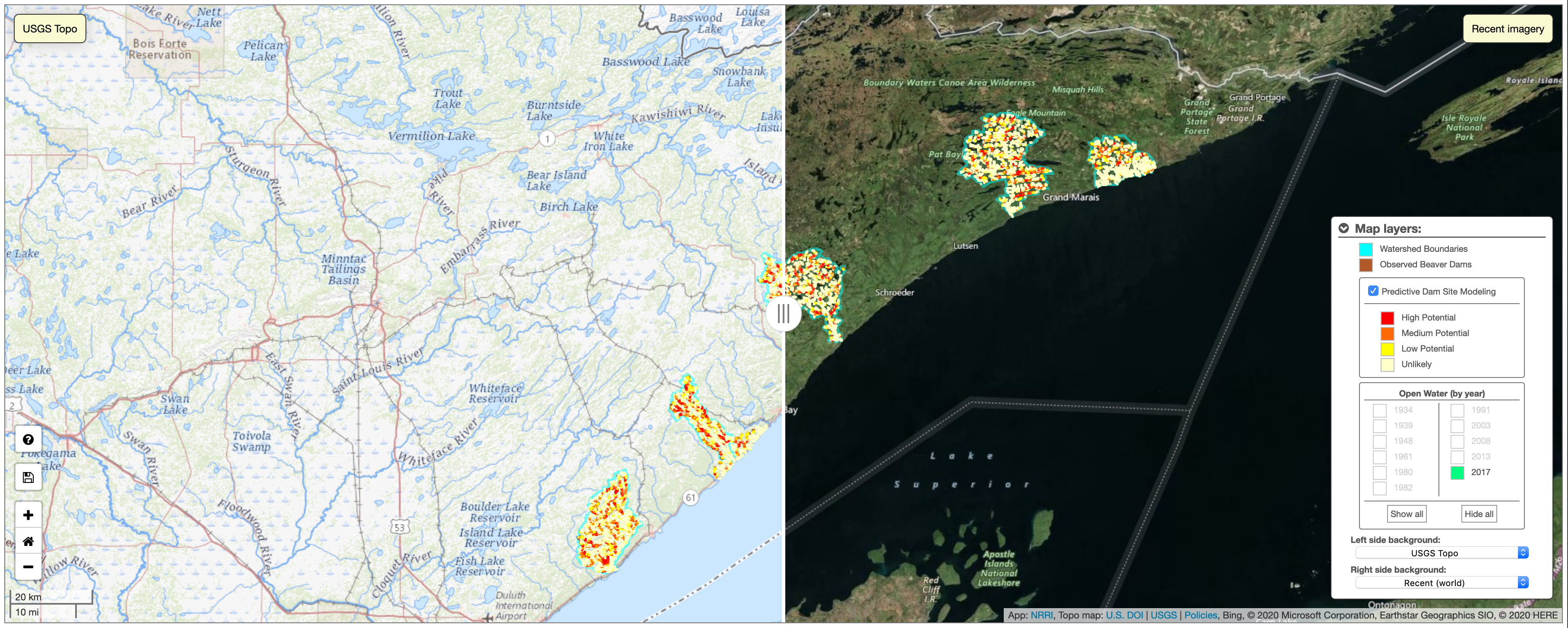Minnesota Mammals
A Inventory of Minnesota Carnivores
Learn about the carnivore species in Minnesota and the surrounding states and provinces
Learn about the carnivore species in Minnesota and the surrounding states and provinces
Small organizations, including many that work on natural resource issues, often lack the capacity to use spatial data in their decision making processes. This has generally required expensive software and considerable specialized training. Researchers at the Natural Resources Research Institute, along with collaborators at the University of Minnesota Center and Minnesota Sea Grant, are working to remove those barriers through the development of the Minnesota Natural Resource Atlas.
Our staff have been serving wood products companies across the region for more than 30 years. We collaborate closely with industrial and entrepreneurial partners and associations to develop and evaluate new products and processes, demonstrate added-value reuse and repurposing of wood-based products, and assist clients with material and product testing.
Hybrid poplars and willows are the focus of woody bioenergy crops within both the Department of Energy and Department of Agriculture. The emerging markets for natural climate solutions have renewed interest in the potential of trees and long-lived forest products to sequester carbon.
We help ensure that Minnesota and Great Lakes aquatic resources are being used in sustainable ways, and that restoration activities truly achieve their goals. Our team specializes in research on the ecology of aquatic macroinvertebrate and fish assemblages and assessing the condition of their habitat in streams, the nearshore area of lakes, wetlands, including Great Lakes coastal wetlands.
The Environmental Chemistry research group combines interdisciplinary insights from engineering, chemistry, microbiology, and materials science to address pressing contamination threats in water treatment systems and the natural environment. By incorporating next-generation analytical techniques with an understanding of engineering fundamentals, we seek to develop a systems-level understanding of the interrelations between biogeochemical processes and the fate and transport of legacy and emerging organic contaminants in aquatic systems.

NRRI’s Geographic Information Systems (GIS) laboratory was established in 1988 through a National Science Foundation grant, with matching funds from the University of Minnesota.
As human population and living standards increase, human activities place unprecedented stress on natural freshwater ecosystems with global climate change. Microbiological and chemical contaminants in our water create challenges to protect the ecosystem and public health. NRRI’s Environmental Microbiology and Biotechnology research program has been studying sources, fate, and transformations of contaminants in natural (e.g. lakes, streams, and wetlands) and built (e.g. sewer and treatment facility, landfills and stormwater systems) environments.